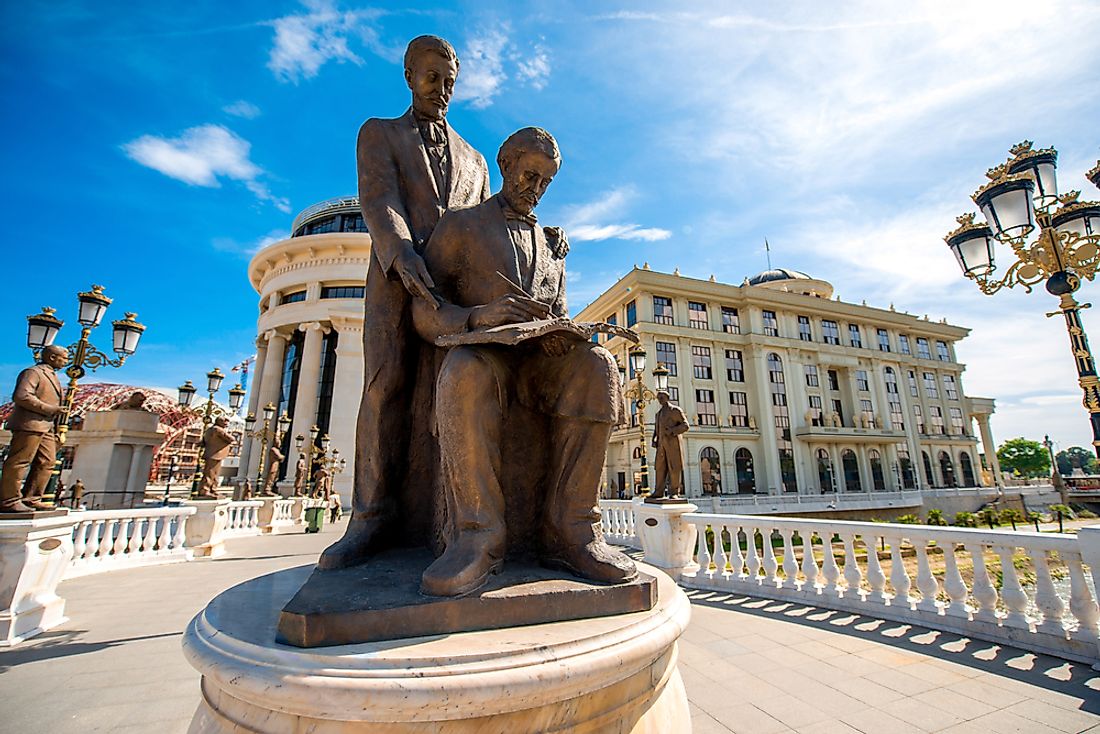The Macedonian People - Cultures of the World

The Macedonian people are a Slavic ethnic group. They are native residents of the region of Macedonia which in its modern form is known as the Republic of Macedonia. The population of Macedonian people is estimated to be between 2 to 2.2 million with nearly two-thirds of them living in the Republic of Macedonia. The rest live in small communities in several countries mostly around Macedonia.
5. Description
Macedonia is a landlocked country in Balkan region of south-east Europe. The modern Republic of Macedonia shares its borders with Greece, Albania, Bulgaria and Serbia. The Macedonian state was established in 1944 despite their claims to nationhood going largely ignored as the World War II was going on in full swing. The history of the region dates back to the medieval times though. The earliest evidence is provided by Byzantine documents which indicate the Slavs of Macedonia as a unique group of peoples. Macedonia is also the only country that gained independence from Yugoslavia in 1991 without any form of bloodshed.
4. Architecture
Macedonia has a major urban center in Skopje which is a metropolitan city. A quarter of people reside in this city which derives its architectural influences from the Byzantine and Ottoman Empires. Almost all houses have a balcony as a mandatory feature of the house while a central courtyard is also a common feature in the apartment buildings with most single rooms opening in the same central courtyard. Most of the affluent neighbourhoods have double or triple storey units with a first or second floor extended into the street.
3. Cuisine
The Balkan cuisine is influenced by Greek and Turkish foods. Many of the fresh produce is locally grown and harvested. Vegetables, fruits and herbs are all readily available as the warm weather supports agriculture and provides excellent conditions for farming. Macedonian food is famous for its dairy products, wines and local varieties of alcoholic beverages. The national dish of Macedonia is considered to be Tavče Gravče which is made of fresh beans. The national drink is called mastika, which is a liqueur containing almost 43% alcohol.
2. Cultural Significance
The Macedonian language belongs to a group of South Slavic Languages. The language and its roots are preserved as continual efforts continue to be directed in this area. Macedonian was first codified in 1940s only - it’s a fairly new standardized language. It is commonly spoken all over the country as it also serves as the official language. The written script bears close resemblance to Cyrillic script.
1. Threats
Past threats to the culture have included organized attacks in some cities. Macedonian people, or a small group of them, participated in World War II in some battles in 1943 which eventually led to the formation of the state. However, they formally gained independence only in 1991 after which the efforts were redirected to the quick inclusion in the European Union for the benefit of the economy.
Finally, the state is claimed by both Greece and Bulgaria to be rightfully theirs although there hasn’t been active political unrest in recent times stemming from this. Macedonian people are generally the most welcoming in the Balkan states and tourists often return with fond memories and a desire to return again due to the amazingly hospitable nature.







